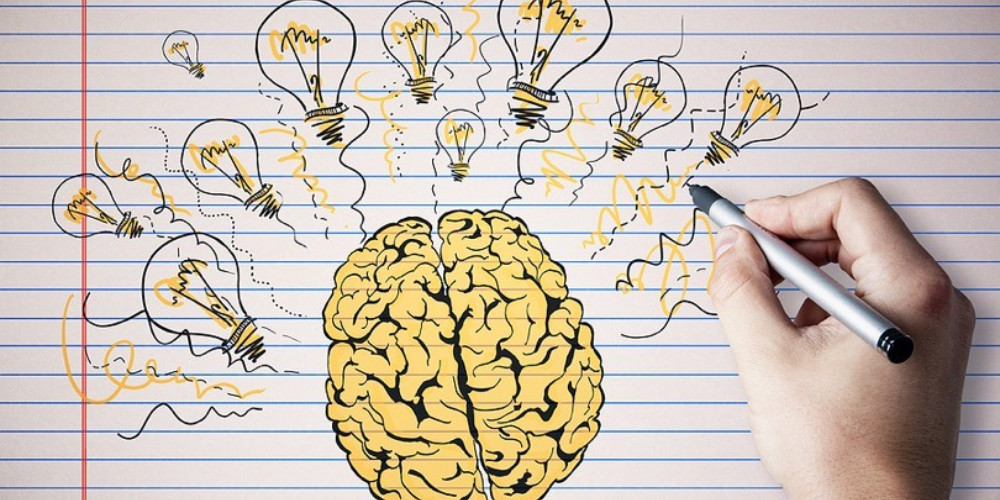This article discusses the typical creative process that most excellent ideas go through. This is crucial to understand because success in many industries depends on inventiveness. Typically, a problem or obstacle triggers the creative process. The thinker then suggests a few potential answers to the issue. The finest option among these is chosen after evaluation. The planned course of action is then carried out, and the outcomes are evaluated. Despite its apparent simplicity, this method is actually rather complicated. Each stage of the process is susceptible to a wide range of influences.
For example, the type of problem that needs to be solved can greatly impact the thinking process. Some problems are more difficult to solve, making the creative process more challenging. However, by understanding how the creative process works, you can improve your chances of coming up with great ideas.
How to turn a problem into an opportunity
When you’re stuck in a rut, it cannot be easy to see beyond your current situation. However, by learning to reframe your problems as opportunities, you can open yourself up to new possibilities and more creative thinking. Here are three ways to turn a problem into an opportunity for more creative brain power:
1. Step back and take a bird’s eye view
When you’re too close to a problem, it can be hard to see the bigger picture. But by taking a step back and looking at the situation from a different perspective, you may be able to find new solutions that you hadn’t considered before.
2. Break out of your comfort zone
If you’re always approaching problems, in the same way, it’s time to mix things up and try something new.

How to have more creative flashes of insight
When it comes to having more creative flashes of insight, you can do a few things to improve your chances. First, ensure you’re taking the time to daydream and allow your mind to wander. This is when some of the best insights occur. Secondly, don’t be afraid to brainstorm with others. A collaborative effort can lead to some great ideas. Lastly, keep a journal handy at all times. You never know when inspiration will hit, and being able to write it down will help you remember it later. By following these tips, you’ll be well on your way to having more creative flashes of insight.
The 3 Stages of the Creative Process
Assuming you would like an article discussing the five stages of the creative process:
1. The first stage of the creative process is known as preparation. This is when we gather information and start coming up with ideas. We may research, brainstorm, or start thinking about what we want to create.
2. The second stage is incubation. This is when we take a break from actively working on our project and let our minds wander. This can be a helpful way to allow new ideas to come to us. We may take a walk, take a nap, or daydream.
3. The third stage is illumination or Insight. This is when the “lightbulb moment” happens, and we suddenly have a great idea for our project.
How to Get Your Creative Juices Flowing
Some people seem to have all the luck when it comes to being creative. Creativity can strike at any time, but sometimes it can be hard to get those juices flowing. If you’re feeling stuck, here are a few tried and true methods for getting your creative juices flowing.
One way to get started is to take a break from whatever you’re working on. Get up and walk around, take a nap or step away from your work to clear your head. Sometimes the best ideas come when you’re not actively trying to think of them.
Another method is to try brainstorming with someone else. Collaborating with someone can help spark new ideas and help you see things from a different perspective.

The Creative Process in Short
The creative process is a journey that begins with an idea. This idea can come from anywhere, but it must be nurtured and developed into something tangible. The first step is to have a vision for what you want to create. This vision can be as simple as a sketch or as complex as a detailed plan. Once you have your vision, the next step is to bring it to life. This can be done through brainstorming, research, and experimentation. The final step is to share your creation with the world. This can be done through publication, exhibition, or performance.
When we talk about the creative process, we’re talking about the act of making new connections between old ideas. In other words, creative thinking is the task of recognizing relationships.
For example, when you see a dog, you might think about how dogs are related to other animals. You might think about how dogs are related to humans. You might even think about how dogs are related to objects in the world around them. These thoughts are valid and can be considered part of the creative process. The key is to keep making new connections between old ideas to create something original.
So next time you’re feeling stuck, don’t worry. Just start making some new connections and see where they take you. Who knows, you might just come up with something brilliant!











